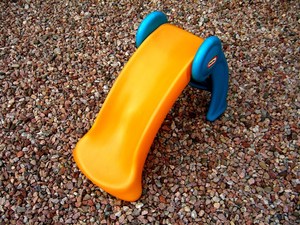Legitimate work-at-home jobs are hard to find. If you search on the internet or peruse the classifieds in your local newspaper, it can often be difficult to recognize which job advertisements are valid and authentic (primarily because nearly all of these advertisements are inaccurate and misleading). And most people are not lucky enough to work for companies that offer opportunities for their employees to work from home at all. But, there is still a solution: start your own in-home childcare business.
Sure, it sounds difficult, but it doesn’t have to be if you get the right help in getting started. There are several steps you need to take, and I will outline those here for you. Follow this guideline, and you can have your own in-home childcare business up and running faster than you may think.
First of all, find out where your county welfare department is located. Take a trip down to that office and ask for the paperwork necessary for getting certified as a Childcare Home Provider. Why go through the welfare department? Mainly because getting a certification this way will kill two birds with one stone-you will become a licensed childcare provider, trained and qualified to look after children; and, after you are certified, the welfare department will send potential clients to you.
There are other benefits to going through the welfare department for your certification. For example, if the children for whom you provide care are from families who receive welfare childcare assistance, you will receive payment directly from the state for their care. You may also receive payment from the parents, depending upon the percentage of their care that is covered by the welfare department. Also, depending upon your county policies, you may receive transportation reimbursement if you take these children to and from school. Some counties also reimburse Childcare Home Providers for money spent on meals and snacks for the children for whom they provide care.
So, assuming you have decided to go through your county welfare department for your childcare certification, your next step is to fill it out and gather the necessary materials to submit in order to qualify. Most counties will require you to get a physical from your primary care physician as well as a TB (tuberculosis) test. Your doctor will need to have a copy of your shot records in order to make sure that you are free from infectious diseases; if you do not have access to your shot records, you may need to get a few booster shots and possibly a Tetanus shot. Some other paperwork that your county will likely require may be a copy of your high school diploma or GED and a few written references from unrelated co-workers or friends. You will probably have to sign a form agreeing to let the county investigate your background in order to make sure that you have not been convicted of any felonious crimes. Your social security number will be required; some counties may request your fingerprints as well.
After you have gathered the necessary paperwork and turned it in, you are probably in for a lengthy wait. County welfare departments are generally known for being very precise and thorough in everything that they do; this meticulousness usually causes paperwork to move through the system at a snail’s pace. But once your file passes through all of the red tape and your background check as well as the rest of your paperwork was satisfactory, the next step is usually a home interview and inspection.
An official from your county welfare department will come to your home and perform an assessment of you and your home. This person will converse with you and ask you a lot of questions about how you would handle various situations that could arise in a childcare setting. Some of these questions will focus on how you would discipline a child, what kinds of daily activities you would plan for the children in your care, and how you would handle a first-aid emergency.
The official who comes to your home will also be inspecting your house to make sure that it would be an acceptable setting for an at-home childcare provider. Your house must meet certain safety standards; these will be outlined in the paperwork that is given to you with your application. Some of these criteria include having a fire extinguisher in the kitchen, having smoke/fire alarms on each level of the home, making sure that each unused electrical outlet has a child safety cover installed, and keeping all areas of the home well-lit. Your home must also have adequate space for the children; some counties require a minimum amount of square footage per child of usable indoor floor space.
If you and your home pass the assessments from the county official, you have at least one more step to take-most every county will require you to pass a CPR class. Some counties will also instruct you to take an additional class, such as a health and safety course or a first aid course. It may also be compulsory that you agree to complete a certain number of hours of childcare training each year after you receive your certification.
After taking any necessary classes, you should receive your Childcare Home Provider certificate. Soon thereafter, you will likely begin to get some phone calls from possible clients-it shouldn’t take long, because there is a constant need for childcare providers. Good luck, and have fun with your legitimate work-at-home business!


